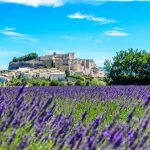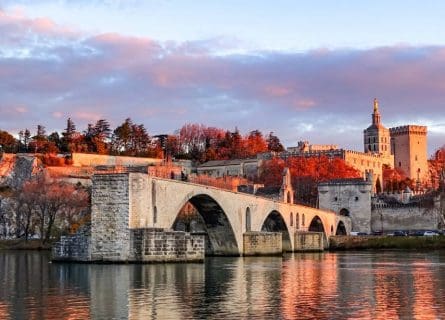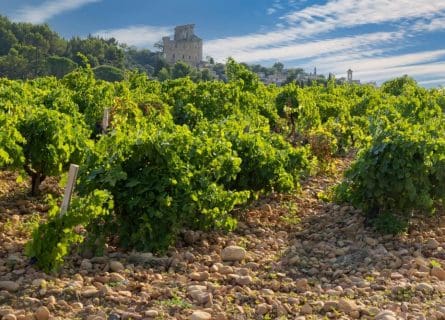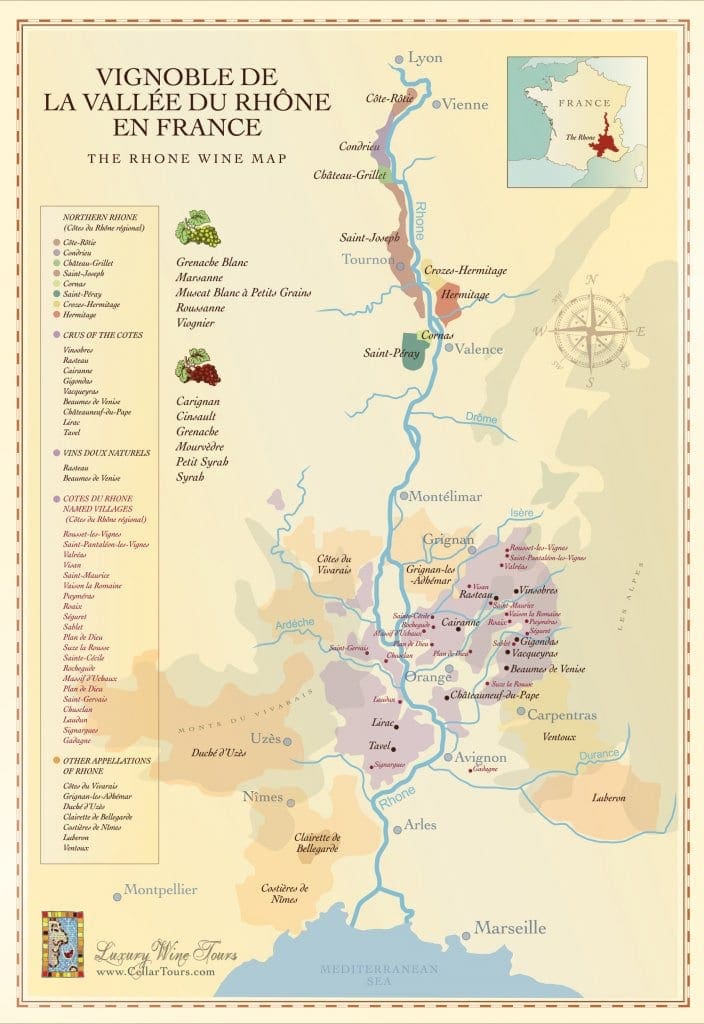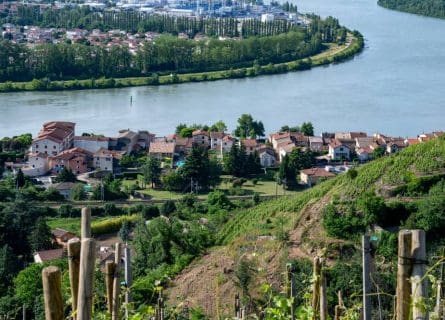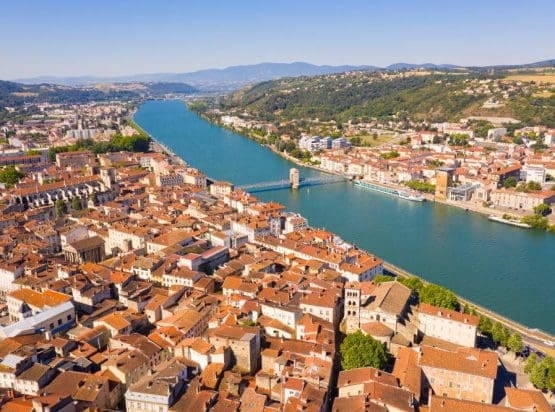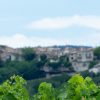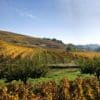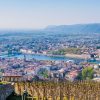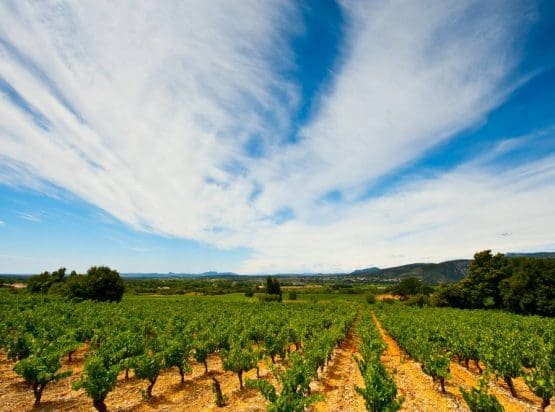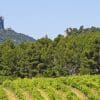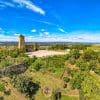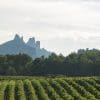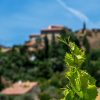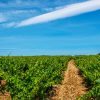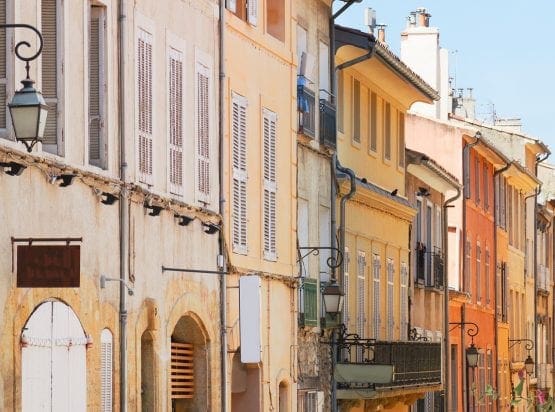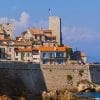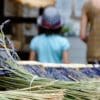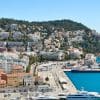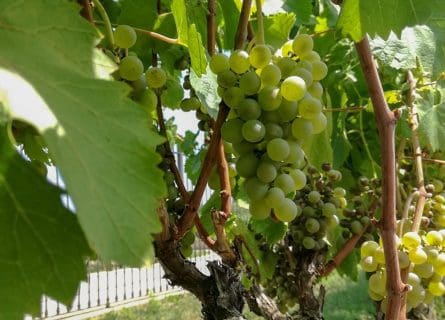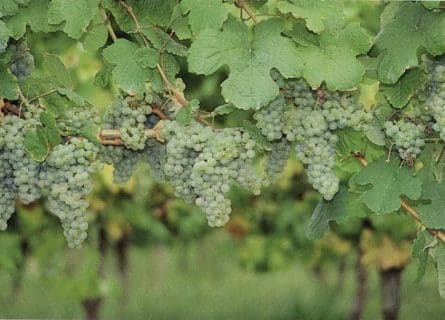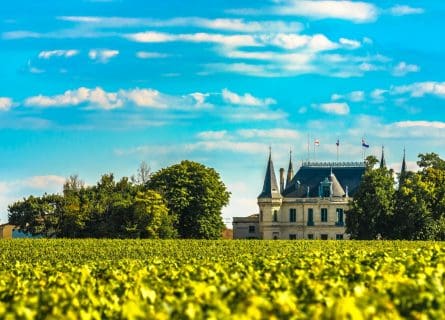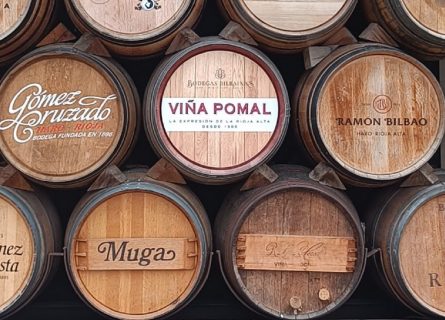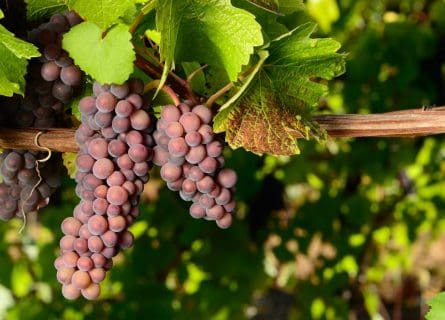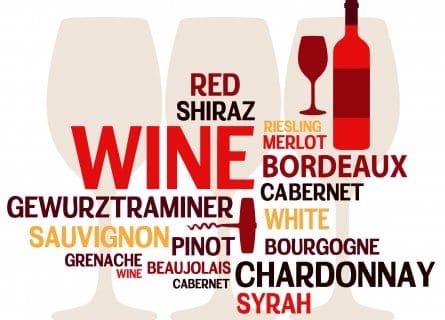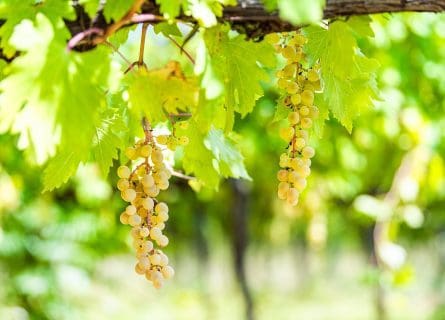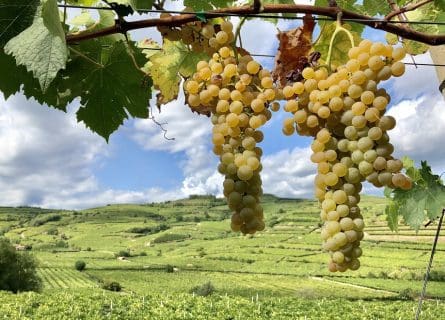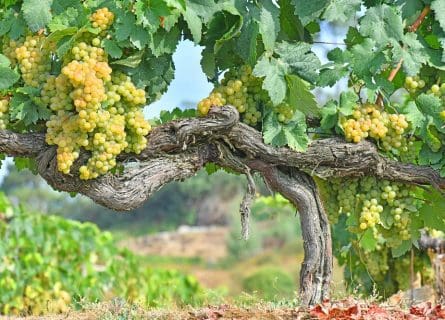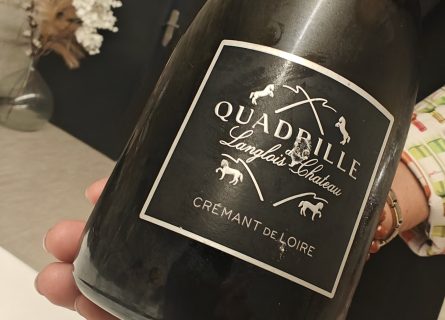The Rhône Valley region is divided between the Northern and Southern Rhône, where the corresponding wines are quite different in style. The northern and southern parts are very different geographically.
The Northern Rhône stretches south down the narrow valley of the River Rhône, from the town of Vienne in the north to Valence in the south. Côte-Rôtie is the first significant appellation we come across; some of the finest, finesse-driven wines of the Rhône are made here. Syrah is the main grape; a little Viognier is often blended with the Syrah, giving the wines a beautiful soft fragrance and texture. Syrah has a distinct peppery character and warmth; red berry fruits and spice are often found on the nose.
Steep Terraces and Fine Wines
The vineyards of Côte-Rôtie lie on extremely steep terraces, which is not an easy place to grow grapes. Those poor pickers! There are 200 hectares under vine, with several superior sites or crus identified. The best wines come from the center of the appellation. These wines are sublime, elegant, soft reds in great years that develop great complexity as they age.
The Renaissance of Viognier
Immediately south of Côte-Rôtie, the Condrieu vineyards continue on the river’s western bank. The soils here are composed of granite and sandstone rather than schist, as is the case further north—perfect conditions for that uniquely perfumed, white variety Viognier. Widely planted further afield, from the Languedoc to Australia, the variety has recently enjoyed a renaissance with wine drinkers. It is not an easy grape to grow, but the best examples from the region are stunningly aromatic, vibrant wines.
Extensive Appellations and Diverse Soils
The most extensive appellation in the north is Saint Joseph. It encompasses the southern part of Condrieu and runs right down the western bank of the river to the borders of Cornas, just to the north of Valence. The reds are produced again from Syrah, while the whites are a blend of Marsanne and Roussanne. The best wines come from the gravel-based soils close to the river.
Further south, we arrive at the great hill of Hermitage, and its wines, dark, brooding, and powerful, perhaps define the essence of classic Northern Rhône reds. There are fewer producers here than at Côte-Rôtie, and a mere 131 hectares of vineyards. The hill is divided into seven different crus, each with varying soil types. Syrah, accompanied by whites based on Marsanne and some Roussanne, can age well; the best examples have a long life. Hermitage wines, which often appear quite closed when young, require at least 6-8 years to fully express their qualities.
Crozes-Hermitage and Cornas: Diversity and Intensity
Surrounding the hill of Hermitage are the vineyards of Crozes-Hermitage. The same grapes are used, but the vineyard area is much larger and encompasses over 1200 hectares of vines. The best are very good and considerably less expensive than Hermitage. To the south end and on the west bank of the river opposite Valenceare is the appellation of Cornas, which borders southern Saint-Joseph and immediately to its south Saint-Péray. Cornas is a dense, powerful Syrah. It has more in common with Hermitage than Côte-Rôtie. A wide range of styles is produced, from the traditional, lightly oaked wines to the modern style, seasoned with new oak barrels. These are dark, fruited, intense, and extremely long-lived expressions of Syrah at their finest.
